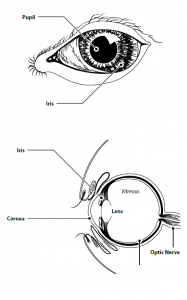What You Need to Know About Feline Herpes Virus in Cats
Over 90% of cats encounter feline herpes virus via direct contact with infected secretions, but not all show signs.
More than 90% of cats have been exposed to feline herpes virus (FHV), an upper respiratory disease that is transmitted by direct contact with the virus through saliva, eye, or nose secretions. Although nearly all cats are exposed to the virus, not all will develop signs of the disease.
What Are the Signs of FHV?
The clinical signs of feline herpes vary, but can include:
- Sneezing
- Nasal discharge
- Lethargy
- Fever
- Anorexia
- Dermatitis (skin inflammation and/or ulcers)
- Excessive blinking or squinting
Once a cat is infected with FHV, they will usually show disease signs in two to five days (incubation period of the disease). During the incubation period, the infected cat can pass along the disease to other cats. Once the signs appear, the active infection lasts about 10 to 20 days.
Cats with FHV can develop eosinophilic keratitis, a chronic, inflammatory disease of the cornea, because of an overreaction of their immune system to the virus. Eosinophils (a type of white blood cell) invade the cornea, causing it to appear as if there are white to pink bumps on it and/or cloudiness (edema) and blood vessel ingrowth.
How Is FHV Treated?
There is no cure for the feline herpes virus. It behaves similarly to the human herpes virus that causes cold sores – once the virus is present, it remains in the body for life. The disease can be dormant and go through phases of being active. In many cats, being a carrier of the virus does not cause problems and they do not shed the virus multiple times. Any stressful situation for your cat, such as travel, boarding, or introducing new animals, can activate the virus.
If your cat has active FHV, your veterinarian may prescribe an antiviral medication or a steroid to help alleviate signs of the disease. To help prevent future outbreaks of the virus, your veterinarian may recommend l-lysine, an over-the-counter amino acid.
If your cat is diagnosed with eosinophilic keratitis, the medication your veterinarian will prescribe must be taken for the duration of the cat’s life. Stopping the medication can cause the disease to return, making it more difficult to control.
How Can I Protect My Cat from FHV?
Although vaccination does not necessarily prevent FHV, it can greatly reduce the severity of the disease. Two or three injections are recommended for kittens, starting at around 8 weeks old. Cats should receive a booster at one year of age and then booster vaccines every one to three years.

Diagram of the eye.
Pet Care Resources
For ways to ensure your pet lives a happier, healthier life, visit our Pet Care Resources library.
View ResourcesPet Care Resources
For ways to ensure your pet lives a happier, healthier life, visit our Pet Care Resources library.
View Resources